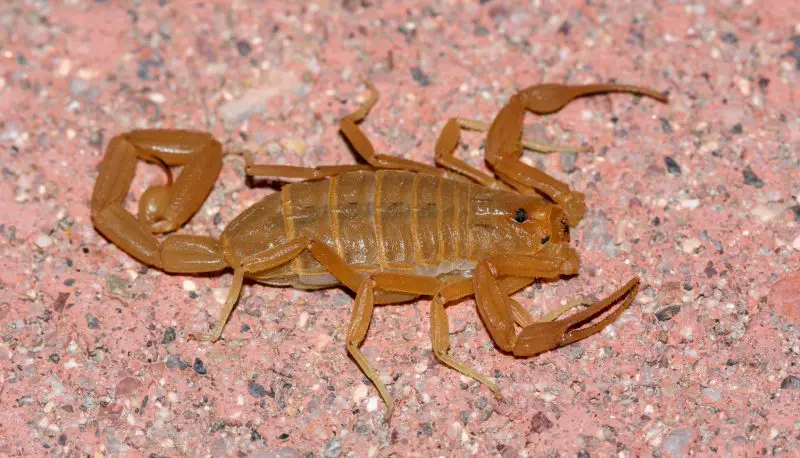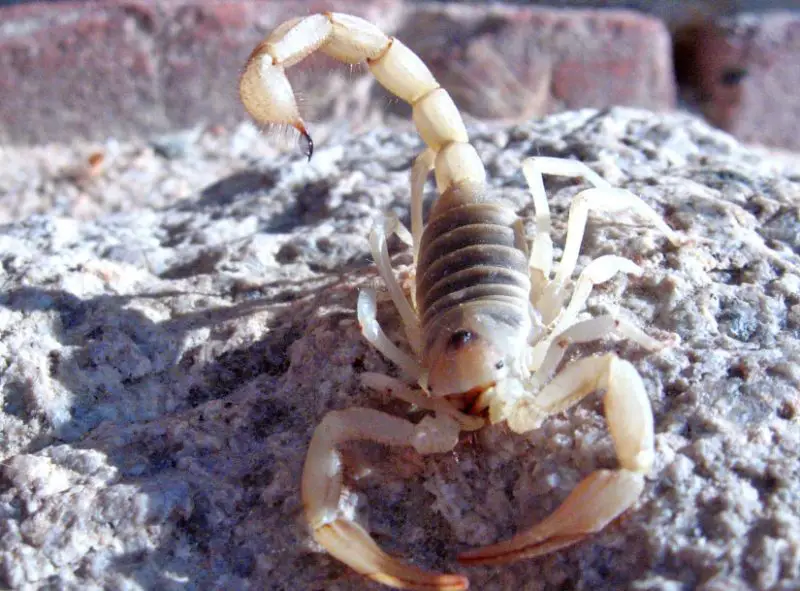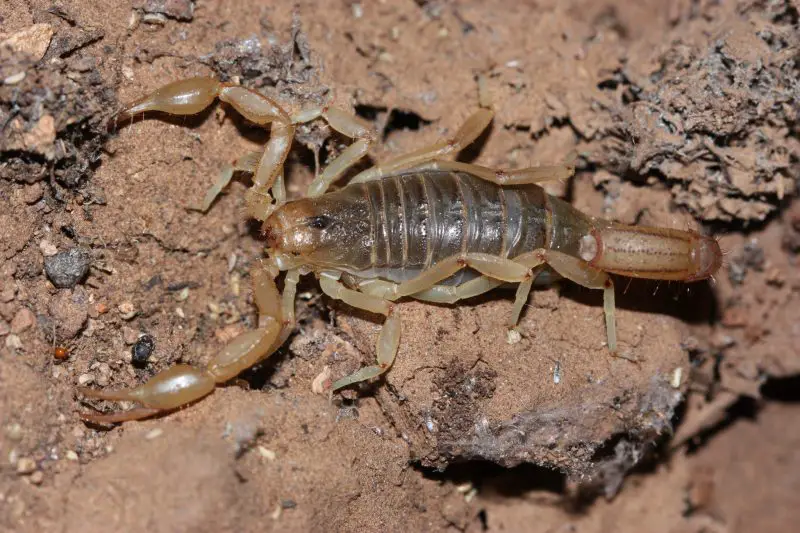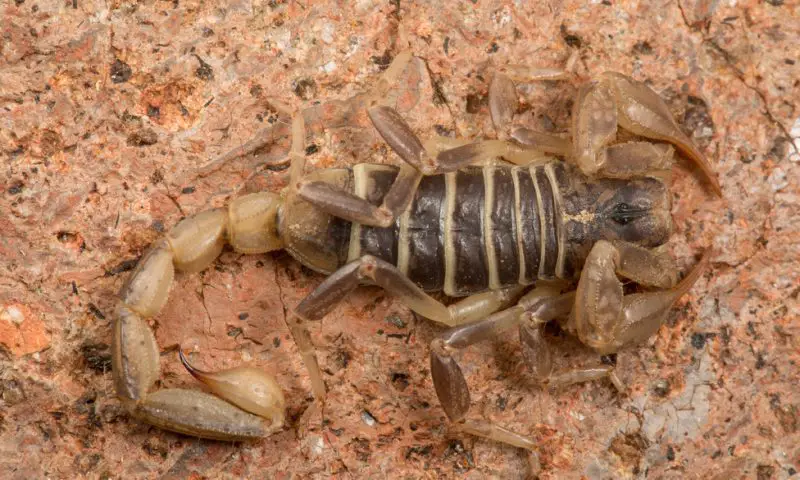Nevada’s deserts are both beautiful and dangerous. From the dry, rocky terrain of Red Rock Canyon to the quiet nights of the Mojave, this state is home to a variety of wild creatures that thrive in extreme conditions. Among them, the scorpion is one of the most misunderstood—and often underestimated.
Most people think of scorpions as creepy desert dwellers that simply wander outdoors. But the truth is far more alarming. Scorpions are incredibly adaptable and often make their way into Nevada homes, hiding in cracks, shoes, or even bedding. Their venom can range from mildly painful to potentially life-threatening, depending on the species and the victim’s health.
This article dives deep into the world of scorpions in Nevada—their biology, the hidden risks they pose, how they get inside homes, and what you can do to stay safe. You’ll also learn about the most dangerous species, myths to avoid, and proven prevention strategies every Nevada homeowner should know.
Scorpions of Nevada: What You’re Dealing With
The Most Common Species
Nevada hosts a surprising variety of scorpions, but a few species stand out due to their prevalence and risk to humans.
Arizona Bark Scorpion (Centruroides sculpturatus)

The Arizona Bark Scorpion is the most venomous species in North America—and it thrives in southern Nevada, especially in Clark County. Measuring only about 3 inches long, this pale yellow scorpion is slender, fast, and can climb walls, ceilings, and even curtains. Its venom affects the nervous system, sometimes causing severe pain, numbness, muscle twitching, or breathing difficulty.
Giant Desert Hairy Scorpion (Hadrurus arizonensis)

This large, intimidating species can reach up to 5.5 inches long and is the biggest scorpion in North America. While its sting is painful, it’s not medically significant for most adults. However, it can trigger allergic reactions and frighten homeowners due to its sheer size. These scorpions are often found in rural parts of Nevada and around rocky areas.
Striped-Tail Scorpion (Paravaejovis spinigerus)

Smaller and less venomous than the bark scorpion, the striped-tail scorpion is recognized by two dark stripes along its body. It prefers dry, sandy environments and is frequently found under rocks, debris, and outdoor equipment.
Northern Desert Scorpion (Paruroctonus mesaensis)

This scorpion is common in northern parts of the state. It’s less likely to invade homes but still delivers a painful sting. Its presence often signals a healthy desert ecosystem—but also the need for caution when hiking or camping.
Why Nevada Is Perfect for Scorpions
A Desert Haven
Scorpions are ancient survivors, perfectly adapted to arid conditions. Nevada’s dry climate, rocky landscapes, and abundance of shelter make it a paradise for them. They can go months without food or water, emerging at night to hunt insects, spiders, and even small lizards.
Urban Expansion and Habitat Overlap
As Nevada’s cities expand into desert territory, human homes are replacing natural habitats. New housing developments—especially in Las Vegas, Henderson, and Mesquite—are often built on scorpion-filled soil. Construction displaces them, pushing them to seek shelter inside nearby homes.
Moisture and Landscaping
Scorpions are drawn to moisture and cool hiding spots. Well-watered lawns, garden rocks, and irrigation systems create perfect microclimates for them. Even decorative landscaping, like stone walls or mulch beds, can harbor dozens of scorpions.
The Hidden Dangers of Scorpions
1. Venomous Stings
The primary danger of scorpions is their sting. While most Nevada species cause pain comparable to a bee sting, the Arizona Bark Scorpion’s venom is neurotoxic and can be serious. Symptoms can include:
- Intense pain and burning sensation
- Tingling or numbness spreading through limbs
- Difficulty breathing or swallowing
- Involuntary muscle twitching
- Nausea, dizziness, or vomiting
Children, the elderly, and people with allergies are most at risk. Although fatalities are rare, severe cases require antivenom treatment available in hospitals throughout southern Nevada.
2. Indoor Infestations
Unlike many desert pests, scorpions can—and do—enter homes. The Arizona Bark Scorpion, in particular, can climb vertical surfaces and squeeze through gaps as small as a credit card’s thickness. They’re often found:
- In bathrooms, closets, or laundry rooms
- Inside shoes, towels, and bedding
- Behind baseboards or wall voids
- Hanging from ceilings or hiding in air vents
Finding one indoors often means more are nearby. Scorpions reproduce quickly, with a single female capable of birthing dozens of young at once.
3. Hidden Risks to Pets
Dogs and cats are curious by nature, which puts them at risk of scorpion stings. Smaller pets, especially toy breeds or kittens, may experience severe pain or paralysis. A sting to the paw, face, or mouth can be extremely painful. If a pet exhibits trembling, drooling, or limping, immediate veterinary care is needed.
4. Unexpected Places They Hide
Many homeowners are shocked to discover scorpions in beds, clothing, or even bathtubs. Because they’re nocturnal, most stings occur at night or early morning. A famous case in Las Vegas involved a hotel guest stung on his private area while asleep—a clear reminder that these creatures can show up anywhere.
The Psychological and Economic Impact
Living with scorpions isn’t just a physical hazard—it’s a mental one. Homeowners often report anxiety, insomnia, and constant fear after discovering an infestation. Children may refuse to sleep in their rooms, and adults may feel uneasy walking barefoot indoors.
Financially, repeated pest treatments, property maintenance, and emergency medical costs add up. Some infestations can even lower home values, especially in desert-edge neighborhoods where scorpions are known to thrive.
How Scorpions Invade Nevada Homes
Entry Points
Scorpions use gaps under doors, cracks in concrete foundations, vents, plumbing lines, and wall voids to enter. Homes built with hollow block walls are particularly vulnerable. Bark Scorpions can even climb stucco and fall into attic vents or ceilings.
Attraction Factors
They’re drawn to moisture, prey (like crickets and roaches), and cool shade. Bright outdoor lighting attracts insects, which in turn lure scorpions. Pools, fountains, and sprinkler systems provide hydration sources during hot nights.
Reproduction and Infestation
A single female scorpion can live 3–8 years and produce 30 or more offspring annually. Juveniles often remain with the mother for a few weeks before dispersing—usually into nearby cracks or furniture. Once established, infestations can persist for years if untreated.
How to Protect Yourself and Your Family
Homeproofing Your Property
Scorpion control begins with exclusion. Seal cracks, repair screens, and install door sweeps. Caulk around pipes, wires, and vents. Use mesh on weep holes and ensure windows close tightly. Avoid storing firewood or debris near the foundation.
Outdoors, trim vegetation, remove rock piles, and minimize moisture. Keep trash bins sealed and away from the house. Even a few small environmental adjustments can drastically reduce scorpion attraction.
Smart Indoor Habits
- Shake out shoes, clothes, and bedding before use.
- Avoid walking barefoot at night.
- Use a blacklight flashlight to detect scorpions—they glow bright green under UV light.
- Install sticky traps in corners and along baseboards to monitor activity.
Pest Control and Professional Help
Professional exterminators can apply residual insecticides and perform barrier treatments that target scorpions’ hiding places. They also use specialized methods to control the insects scorpions feed on, which helps starve infestations.
For high-risk areas, some homeowners install scorpion sealing systems—a comprehensive approach that eliminates entry points and applies chemical barriers.
What to Do If You Get Stung
First Aid Steps
- Wash the sting area with soap and water.
- Apply a cold compress or ice pack for 10 minutes at a time to reduce swelling.
- Take pain relievers such as ibuprofen or acetaminophen.
- Stay calm and limit movement of the affected limb.
When to Seek Medical Help
Go to the emergency room immediately if:
- The victim is a child, elderly, or has allergies.
- Symptoms include muscle spasms, drooling, or difficulty breathing.
- The sting occurs near the neck, face, or throat.
If possible, capture the scorpion safely for identification. Hospitals in Las Vegas and Henderson often carry antivenom specifically for Arizona Bark Scorpion stings.
Misconceptions About Nevada Scorpions
“They Only Live Outdoors”
False. Scorpions are excellent climbers and can live comfortably inside homes if conditions are right. They prefer quiet, dark areas and can survive for months without food.
“They’re Harmless Like a Bee Sting”
Only partially true. While many scorpions cause mild pain, Bark Scorpion stings can be severe, especially for vulnerable people. The pain can last several days and may include neurological effects.
“New Homes Don’t Have Scorpions”
Completely false. In fact, newly built homes often see higher activity because construction disturbs native populations, forcing them indoors through cracks and foundation gaps.
Seasonal Patterns and Climate Effects
Scorpion activity peaks between April and October, especially in warm summer nights. However, indoor sightings continue year-round because they seek warmth during cooler months.
Climate change and longer dry periods in Nevada have also expanded their range into higher elevations and new residential areas.
As Las Vegas suburbs continue to grow into desert terrain, scorpion encounters are expected to increase in the coming years.
Protecting Pets from Scorpions
Pets don’t understand the threat scorpions pose. They may paw, bite, or sniff at them out of curiosity. To keep pets safe:
- Keep pet food and water bowls elevated and indoors.
- Avoid letting pets roam in dark corners or garages at night.
- Inspect pet bedding regularly.
- If a pet is stung, visit the vet immediately—symptoms can escalate fast.
Vets in Nevada are familiar with scorpion cases and can provide antivenom or pain relief for affected animals.
Scorpion Control Myths to Avoid
Myth 1: “Diatomaceous earth alone will eliminate scorpions.”
While DE can kill soft-bodied insects, it’s less effective against scorpions due to their thick exoskeletons.
Myth 2: “You can drown them with water.”
Scorpions can survive underwater for up to 48 hours, so flooding them out won’t work.
Myth 3: “Blacklights repel scorpions.”
Blacklights only help detect them—they don’t deter or harm them.
Myth 4: “Killing food sources eliminates scorpions.”
While reducing insects helps, scorpions are resilient and can live long periods without food.
Environmental Importance of Scorpions
Although they’re feared, scorpions play a key role in Nevada’s ecosystem. They control populations of cockroaches, crickets, and spiders. In natural settings, they contribute to balance in desert food chains. The goal isn’t eradication—it’s safe coexistence through prevention and awareness.
FAQs About Scorpions in Nevada
What is the most dangerous scorpion in Nevada?
The Arizona Bark Scorpion is the most venomous and medically significant species in Nevada. Its sting can cause severe pain and neurological symptoms.
How common are scorpion infestations in Nevada homes?
Quite common—especially in Las Vegas, Henderson, and other southern regions. Newer neighborhoods built near desert terrain experience frequent encounters.
Can scorpion stings kill you?
Fatalities are extremely rare, but serious reactions can occur. Immediate medical care ensures safe recovery.
Do scorpions glow under UV light?
Yes. All scorpions fluoresce bright blue-green under ultraviolet light, making them easy to spot at night using a blacklight flashlight.
What should I do if I find one indoors?
Trap it safely using a jar or glass, slide a piece of paper under, and release it outdoors—or contact pest control. Avoid crushing them with bare hands.
How do scorpions get into houses?
They enter through small openings, vents, weep holes, and unsealed gaps. Block walls and poor sealing are major risk factors.
Are scorpions active year-round in Nevada?
They’re most active in warm months but can survive indoors during winter, especially in heated homes.
Can I prevent scorpions without chemicals?
Yes. Sealing entry points, using mesh barriers, reducing moisture, and maintaining a tidy yard are effective natural methods.
How can I protect my pets from scorpion stings?
Keep pets indoors at night, inspect their bedding, and contact a vet if they show signs of pain or paralysis after exposure.
Should I call an exterminator for one scorpion?
Yes—seeing one can mean many more hiding nearby. Professional pest control can identify and eliminate infestations effectively.
Conclusion
The deserts of Nevada are stunning but deceptive. Beneath the sand and stone lurk scorpions—resilient, adaptable predators capable of infiltrating even the cleanest homes. The Arizona Bark Scorpion, in particular, represents a real danger to residents and visitors alike.
Understanding their behavior, recognizing their habitats, and taking preventive measures are essential steps toward safety. With vigilance, regular inspections, and professional help when needed, you can enjoy the beauty of Nevada’s landscape without fear of the hidden dangers that crawl through the night.
Living in Nevada means respecting the desert—and the creatures that call it home. Awareness and preparation are your strongest defense against scorpions and their painful surprises.






